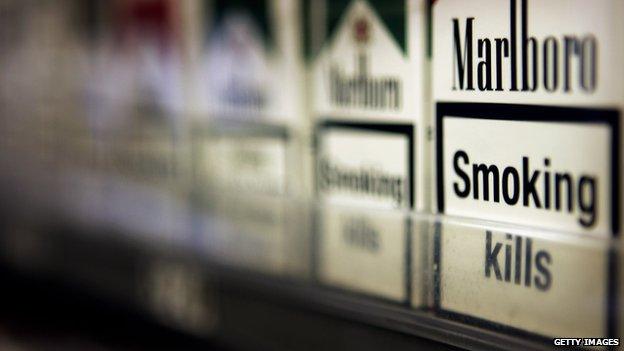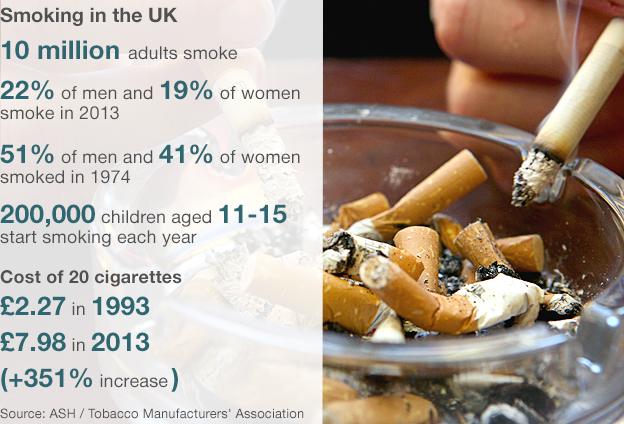Why cigarette packs are the 'silent salesmen'
- Published

Make no mistake, the move to introduce plain packaging is just the latest front in the war against smoking.
Over the past decade, there has been a ban on smoking in public places and moves to restrict displays in shops.
But one of the issues that has been concerning health experts and ministers is the number of people who continue to take up smoking, particularly young people.
More than 200,000 under-16s start in the UK each year - helping ensure a viable market remains for manufacturers once the number of people quitting and dying is taken into account.
In countries like the UK where there is a ban on advertising, the pack remains the last major vehicle for promotion.
Sir Cyril Chantler: "Branding of a packet is part of the appeal to the smoker or potential smoker"
Hence the detail and care taken in the design of the packets with their laminated and special print effects, foil decorations and slide openings and bevelled edges.
It should come as no surprise therefore to learn that they have become known as the "silent salesman" and "mobile billboard" within the industry. They are that important.
'Not plausible'
Manufacturers argue this is only about getting existing smokers to switch brands.
This is illustrated by the evidence which British American Tobacco's head of corporate and regulatory affairs Ronald Ridderbeekx gave to the Chantler Review.
He pointed out that his company only has 8.2% of the UK market, leaving over 90% for it to "shoot for". He said this was "quite enough".
But of course that ignores the fact that if people do not take up smoking the market will disappear eventually.

So it was no surprise to see the review dismissing such claims. Sir Cyril described the industry's case as "not plausible".
Other arguments against plain packaging (although unbranded is perhaps more accurate given that the plan is for them to retain the text and picture warnings) include suggestions it could lead to a fall in price or increase in the illicit market. Again Sir Cyril rejected the criticisms.
But plain packaging is about more than just stopping people taking up smoking.
Research by Stirling University - published in 2012 for the government when it was last considering this move - showed it also helped to reinforce health messages.
Picture and text warnings become more credible and memorable, while plain, darker colours (which is why olive green as opposed to white is the favoured colour for plain packaging here and elsewhere) are more likely to be perceived as harmful, the research concluded.
So what impact would plain packaging have?
Australia is the only country to have introduced it - at the start of 2012 - but it is thought to be too early and too difficult (the move was accompanied by tax rises) to accurately measure the impact.
So Sir Cyril said the only thing was to rely on "reasonable" estimates, which had come up with the 2% figure quoted in Parliament by ministers.
That may sound on the low side, but Sir Cyril said it was still "significant if smoking is to become denormalised".